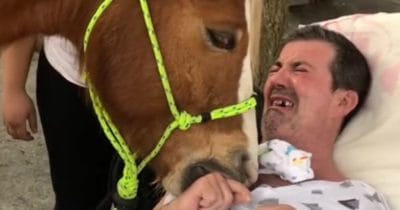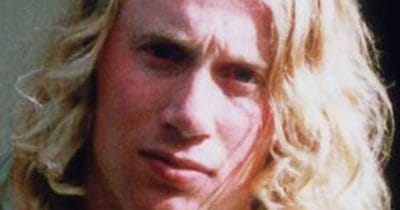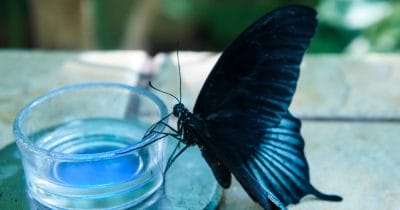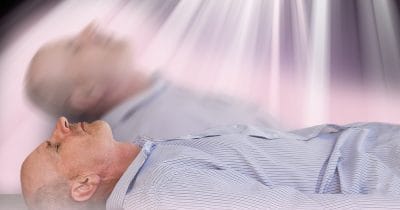
A little over two years ago, John Sarcona had to go into surgery for over 13 hours due to a life-threatening a pair of life-threatening spine conditions.
By the time he was sixteen, his spine was in such bad shape that it was literally crushing his internal organs, making it hard for him to breathe, according to the website of NewYork-Presbyterian hospital.
But thanks to this fateful surgery, John not only survived, but he is now better than ever.

John was only around 5 when he was diagnosed with his scoliosis, and had to be fitted into a torso brace for 18 hours a day.
“I didn’t like it at all when I was little,” he told the site. “It was very restrictive, really hot and itchy.”
John’s mother, Joanne, said, “I used to hate putting it on him. He was such a little tyke. All the time, he’d ask, ‘Can I take it off, Mommy?’ when he’d go play with his brother or friends or when he was tired of wearing it all day. We thought it was only going to be for a short period of time and then it would be over.”
From there, the Sarconas began visiting a number of spine specialists and looked into a number of different treatment options, including one which would have left John with a shortened torso for his entire life.
”Some surgeries were worse than others”
Eventually, the family settled on a series of surgeries, roughly every six months from 2007 to 2013, to insert rods into his back to bring his scoliosis under control.
“Some surgeries were worse than others,” Joanne told NewYork-Presbyterian. “Some years, more surgeries were needed because the rods needed maintenance.”
“With each one, I had the mindset of let’s just take it how it goes and try and move forward, but it was tough because the future was kind of uncertain,” John said.
Still, the surgeries appeared to be successful, at least at first.
Unfortunately, when he was around 13, John started to develop a severe case of thoracic kyphosis, an upward curvature of the spine, and that caused the rods in his back to start to break.
And, eventually, the rods even began to break through John’s skin, something his mother discovered after finding blood on one of his t-shirts. At that point, with the rods ineffective, another surgery had to be scheduled to remove them.
In a lot of pain
“That time I was in a lot of pain,” John told NewYork-Presbyterian. “Normally, after two or three weeks I start getting out of bed, but we didn’t really see any of that progress happening and the incisions weren’t healing. I was sick all the time. I wasn’t holding food down. Going up the stairs, I’d be out of breath.”
Furthermore, a device that measures the air capacity of lungs, called a spirometer, showed that John’s oxygen levels were dropping, prompting his mother to head to the emergency room. But over the phone, her doctor told her instead to go to Dr. Lawrence Lenke, surgeon-in-chief and chief of spinal deformity surgery at the Daniel and Jane Och Spine Hospital at NewYork-Presbyterian.
“If they had waited a few more weeks to come to the hospital, John wouldn’t be here,” he told the hospital’s website. “John’s kyphosis was one of the most severe and most challenging I’ve ever treated.”
After several weeks in the hospital helping John to recover his strength, Dr. Lenke administered vertebral column resection surgery, an extensive and risky procedure that is generally only used as a last resort.
But it would be the last surgery John Sarcona would ever need.

“Waking up, from the surgery, some of the nurses were even so shocked to see my progress,” he said in a video for NewYork-Presbyterian. “Everything felt new.”
In the years since, while John still goes to Dr. Lenke for regular check-ups, he is in better condition than ever, even able to stay active by golfing, biking and playing basketball. And this past May, he was able to walk across the stage at his high school graduation.
“I’m most excited about moving on,” he told NewYork-Presbyterian, “and not having to constantly think about the next surgery in a couple months. … Now I get to feel like a normal kid. I’m focusing on getting stronger and going to college. Now is the time I can focus on school and just be at the same level as everyone else. It’s exciting.”





